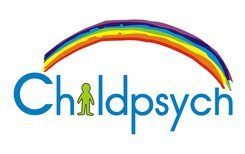When we talk about reading difficulties it helps to think about the pattern of reading problems that the child displays. This helps us to get a better idea of whether the child’s difficulty is due purely to not having had enough experience in reading (as happens often with learning to read in English) or whether they may have an underlying reading disorder, such as Dyslexia.
 Let’s look at some of the different aspects children may struggle with.
Let’s look at some of the different aspects children may struggle with.Types of Reading Difficulties
Sometimes children find it difficult to read words. This is known as specific word reading difficulties (SWRD). At other times children struggle to understand what it is that they are reading. We call this specific reading comprehension difficulties (SRCD). And when children struggle with both of these aspects it is known as mixed reading difficulties (MRD).
Children with SWRD often get stuck on common words. They might stumble, stammer and misread words. Yet when you test their understanding of the text they are able to make sense of it all using contextual clues. But with children who have SCRD it is they opposite. Just listening to them read aloud might have you thinking that their reading skills are absolutely fine. But when you test their comprehension you begin to realise that they were merely saying the words and barely understanding any of it. And those with MRD struggle to read the words and to understand what they mean.
Reading in English
 Now, as a language English is tricky. In fact, researchers at Dundee University have found that it is the most difficult European Language to learn to read. Why? Well, several reasons actually. For one many words contain silent letters, such as lamb and reign. Sometimes letter sounds change depending on the context within the word. Think about the different ways in which the letter “c” is pronounced in a word like conceive. And lastly, English contains many cluster sounds made up of consonants. As in the s, p and r sounds in the word sprout.
Now, as a language English is tricky. In fact, researchers at Dundee University have found that it is the most difficult European Language to learn to read. Why? Well, several reasons actually. For one many words contain silent letters, such as lamb and reign. Sometimes letter sounds change depending on the context within the word. Think about the different ways in which the letter “c” is pronounced in a word like conceive. And lastly, English contains many cluster sounds made up of consonants. As in the s, p and r sounds in the word sprout.When we understand which aspects of reading children struggle with, it makes it easier to determine whether these are due to an underlying reading disorder or whether it the reading difficulties are simply due to not having had enough experience in reading in a difficult language like English.
Identifying Patterns of Reading Difficulties
In order to determine the specific pattern of reading difficulty that a child presents with, we first need to look at the individual components of reading. This can be done through a professional educational assessment. During this assessment, the educational psychologist will look at the following components of reading: vocabulary, letter-sound correlation, phonemic awareness, word decoding, fluent text reading and listening comprehension.
Knowing which components your child struggles with will enable the psychologist to put together an individualised plan of intervention to target areas of weakness.
What you can do:
- If your child is struggling more with reading this his or her peers, set up an appointment with an Educational Psychologist for an assessment.
- Focus on their strengths. Many children with reading difficulties begin to see reading as a chore rather than a leisure activity. Keep their love of reading alive by reading to them, or introducing then to easier texts like comic books if need be.
- Chat to your child’s teacher about the findings of the assessment and how intervention strategies can be implemented at school.
- Monitor your child’s progress. This needs to be a team effort by the parent, teacher and psychologist so all can make sure that the child progresses in reading.
For more information about reading problems in children, or to book a consultation, contact Anel Annandale at 083 711 5267 or via email at anel@childpsych.co.za.

